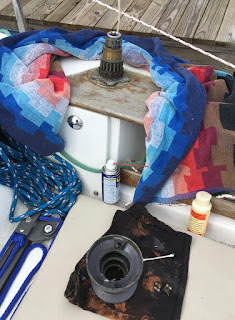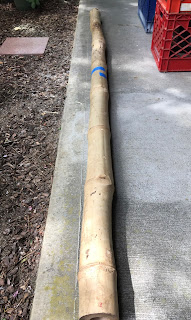Winches and cleats...

I’d been meaning to pull apart and inspect the three winches on the boat ever since I purchased her, and today was the day. After surrounding the work area with a towel (to prevent parts from falling into the watery deep) and carefully removing the round spring clip from the top spindle, I was able to pull off the drum housing. The roller bearings all looked to be in good shape and well greased. Some of the pawls were fine and just needed to be re-oiled. Some were crusted with gunk and either frozen in position or very hard to move. One of the pawl springs had disintegrated which meant another trip to McClendon’s to find a replacement. Here is the “before” picture of the starboard winch once I had removed the pawls and springs from the drum housing: After giving everything a good scrub with WD-40: And now everything is dried, reassembled and re-oiled: Happiness is a smoothly turning winch with crisply clicking pawls! CAM CLEATS Next...


